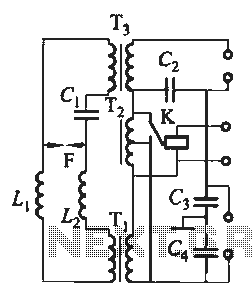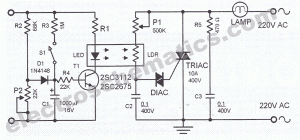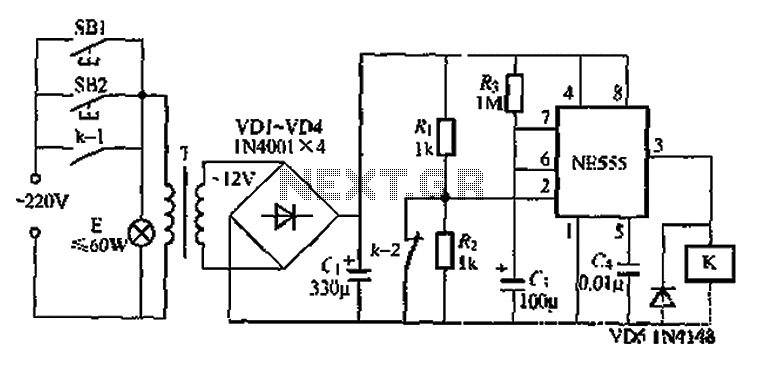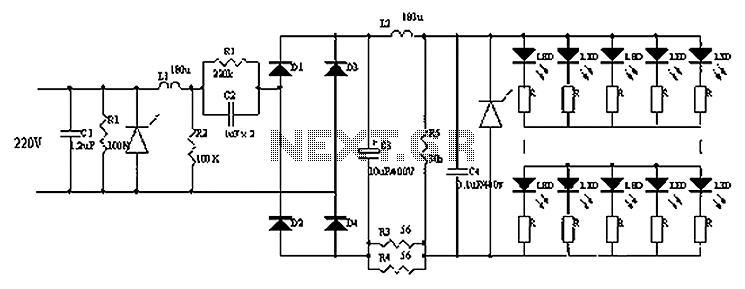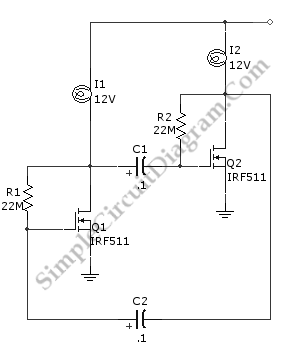
Touch-Controlled Lamp Dimmer
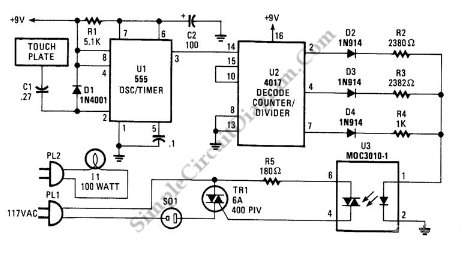
This is a three-mode lamp dimmer circuit with touch control. This circuit can be used to control a lamp in three operation modes: dim, off, and bright. It utilizes a NE555 timer.
The three-mode lamp dimmer circuit designed with touch control capabilities allows for versatile operation of lighting systems. The core component, the NE555 timer, is configured in astable mode to generate a PWM (Pulse Width Modulation) signal, which is instrumental in adjusting the brightness of the connected lamp.
In this circuit, the touch control mechanism is implemented using a capacitive touch sensor that detects the user's touch and sends a signal to the NE555 timer. The output of the NE555 timer is connected to a MOSFET or a TRIAC, which acts as a switch to control the power delivered to the lamp. By varying the duty cycle of the PWM signal, the circuit can effectively control the intensity of the light output in three distinct modes: dim, off, and bright.
When the touch sensor is activated, the circuit cycles through the operational modes. The first touch sets the lamp to the dim mode, where the brightness is reduced to a minimum level. A second touch switches the lamp to the bright mode, providing maximum illumination. A third touch will turn the lamp off completely. This user-friendly interface makes it convenient to adjust lighting according to preference and need.
The circuit can be powered by a standard AC supply, and proper isolation and safety measures must be implemented, especially when dealing with high voltages. Additional components, such as resistors and capacitors, are included in the design to stabilize the NE555 timer and filter the output signal, ensuring smooth operation and preventing flickering in the lamp.
Overall, this three-mode lamp dimmer circuit with touch control is an effective solution for modern lighting control, enhancing both functionality and user experience.This is a three-modes lamp dimmer circuit with touch control. This circuit can be used to control a lamp in 3 operation modes: dim, off, and bright. A NE555.. 🔗 External reference
The three-mode lamp dimmer circuit designed with touch control capabilities allows for versatile operation of lighting systems. The core component, the NE555 timer, is configured in astable mode to generate a PWM (Pulse Width Modulation) signal, which is instrumental in adjusting the brightness of the connected lamp.
In this circuit, the touch control mechanism is implemented using a capacitive touch sensor that detects the user's touch and sends a signal to the NE555 timer. The output of the NE555 timer is connected to a MOSFET or a TRIAC, which acts as a switch to control the power delivered to the lamp. By varying the duty cycle of the PWM signal, the circuit can effectively control the intensity of the light output in three distinct modes: dim, off, and bright.
When the touch sensor is activated, the circuit cycles through the operational modes. The first touch sets the lamp to the dim mode, where the brightness is reduced to a minimum level. A second touch switches the lamp to the bright mode, providing maximum illumination. A third touch will turn the lamp off completely. This user-friendly interface makes it convenient to adjust lighting according to preference and need.
The circuit can be powered by a standard AC supply, and proper isolation and safety measures must be implemented, especially when dealing with high voltages. Additional components, such as resistors and capacitors, are included in the design to stabilize the NE555 timer and filter the output signal, ensuring smooth operation and preventing flickering in the lamp.
Overall, this three-mode lamp dimmer circuit with touch control is an effective solution for modern lighting control, enhancing both functionality and user experience.This is a three-modes lamp dimmer circuit with touch control. This circuit can be used to control a lamp in 3 operation modes: dim, off, and bright. A NE555.. 🔗 External reference
